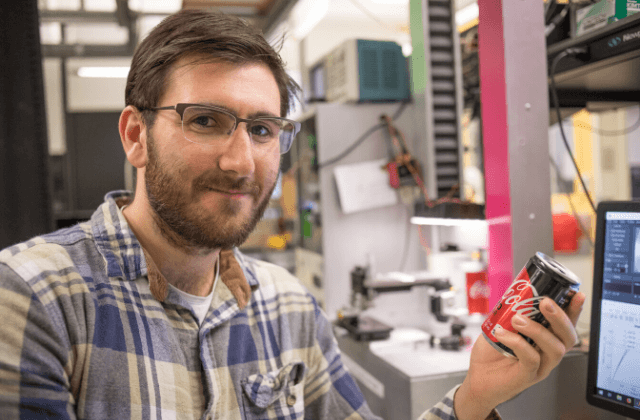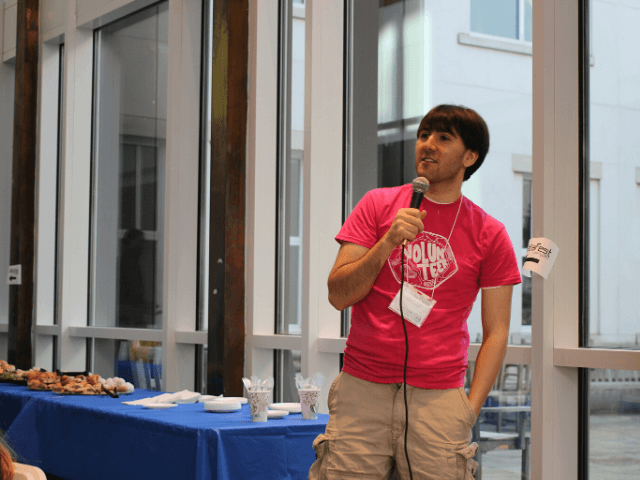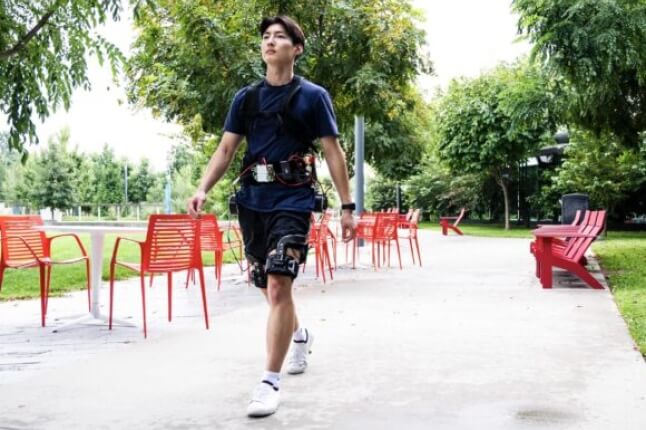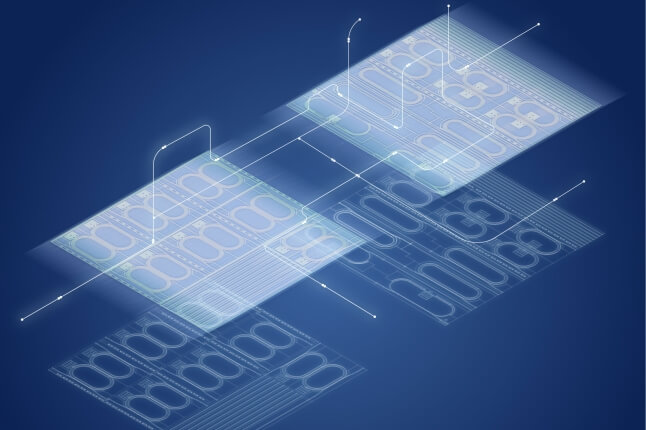News
By crushing, poking, and otherwise torturing soda cans, grad student Nicholas Cuccia is hoping to gain insights that could have implications for the future of space flight. (Photo by Eliza Grinnell/SEAS Communications)
If you apply pressure to a soda can, you can create a kink in the aluminum by poking the can in the side. But how do you know when the can is going to fail?
The question seems simple, but it has stymied researchers for more than 60 years. And while buckling a can may have few consequences, apart from some spilled soda, the same conundrum exists on a larger scale—such as when rockets experience high pressure as they exit Earth’s atmosphere.
“NASA spent a long time trying predict when their rockets would collapse under a load. Due to the time constraints of the Cold War, they opted to find an empirical answer by crushing cylinders of varying size. Surprisingly, what they found was that you could put 10 identical rockets side-by-side and they would all buckle at fairly different loads,” said Nicholas Cuccia, an applied physics Ph.D. candidate at the Harvard John A. Paulson School of Engineering and Applied Sciences and Graduate School of Arts and Sciences. “Since then, this strange buckling phenomenon has remained enigmatic, so with all this renewed interest in space flight, we decided to pick it up.”
Under the guidance of Shmuel M. Rubinstein, Associate Professor of Applied Physics, and Michael P. Brenner, Michael F. Cronin Professor of Applied Mathematics and Applied Physics and Professor of Physics, Cuccia and his colleagues search for an answer by crushing, poking, and otherwise torturing thousands of soda cans.
Cuccia shared scientific concepts with families during a public outreach event. (Photo provided by Nicholas Cucchia)
Because there are so many possible ways to poke a can, Cuccia is using machine learning to help solve this problem. By giving a computer control of the experiment, he hopes to have the computer learn the ‘state’ of the can and predict the maximum load that it will withstand.
“We want to understand why these cans break and use that understanding to predict when they will fail so we can develop better materials and designs,” he said. “Our hope is to find a robust method that can make these predictions without knowing much about the unique random defects hidden within each can.”
The experimental work appeals to Cuccia, who was inspired to pursue science because of a high school physics teacher who made the subject fun and interactive. The first in his family to attend college, he studied physics at Emory University where, through a lucky coincidence, he began research as a freshman.
Cuccia’s first physics professor, Justin Burton, was a new faculty member who had no students working in his lab yet, so he invited anyone in the class to join his research group. Cuccia jumped at the opportunity and began studying soft matter physics, like how piles of sand form on a beach or how gels, such as Jell-O, move when you slide them across a surface.
During a public outreach event, Cuccia uses a Rubens tube to show the relationship between sound waves and sound pressure. (Photo provided by Nicholas Cuccia)
“It is actually really hard to answer those questions,” he said. “I got enthralled with the physics of the everyday, the stuff that surrounds us and that we see all the time, but that we never really think about.”
As Cuccia saw how much fun soft matter physics could be in a lab setting, he was inspired to volunteer for community outreach projects.
He began conducting physics demonstrations at events throughout the Atlanta area. One of his favorites involved a Rubens tube—a perforated pipe with a latex cap at one end that is filled with gas, which is ignited to show the relationship between sound waves and sound pressure. When a sound or music is played against the latex cap, sinusoidal waves travel through the tube, causing the flames to oscillate.
“That was the moment I realized that I liked experimental physics, and what convinced me to become a scientist,” he said. “I was enamored by the fact that you can build an experimental setup and make something invisible appear, right before your eyes.”
In the Rubenstein Lab, Cuccia is using machine learning to understand why aluminum cans break and use that understanding to predict when they will fail. (Photo by Eliza Grinnell/SEAS Communications)
The Rubinstein Lab, with its focus on unraveling the complex physics of the everyday world, seemed like the perfect fit for Cuccia. After working on a project related to friction, he began studying the aluminum cans that will form the focus of his thesis.
The biggest challenge he faces is embarking into the unknown. Since few have used these computational methods to study these problems, he has no way of being sure his experiments will work. It is sometimes difficult to stay encouraged and find a clear path forward when he has no idea what to do next, he said.
These crushed soda cans could someday help scientists develop new materials. (Photo by Eliza Grinnell/SEAS Communications)
But the opportunity to discover something new and contribute to the human experience drives him forward. Despite decades of work, scientists still don’t understand the complex non-linear systems he studies.
“Complexity is the future,” he said. “We’ve done almost all the simple systems. Now, what’s next are the complex non-linear systems which researchers have avoided because they are so complicated. We’re hopeful that machine learning might be a new tool we could use to finally start making sense of them. If we’re lucky, machines may provide a new way to examine these systems so we can start answering questions that have been unanswered for centuries.”
While answering those tough questions is his main driving force, looking back on his path to Harvard, Cuccia is determined to pursue academia so he can teach. As a first-generation college student, he relied on the advice and support of so many great advisors, and he hopes to pay it forward and train other budding researchers who may feel uncertain about academia.
“People think science is hard because it is mathematical, but that phobia is very easily lifted when you have a really good teacher,” he said. “That is the tricky part, finding the right teacher. I’ve been lucky in that respect.”
Topics: AI / Machine Learning, Applied Physics, Materials
Cutting-edge science delivered direct to your inbox.
Join the Harvard SEAS mailing list.
Press Contact
Adam Zewe | 617-496-5878 | azewe@seas.harvard.edu







